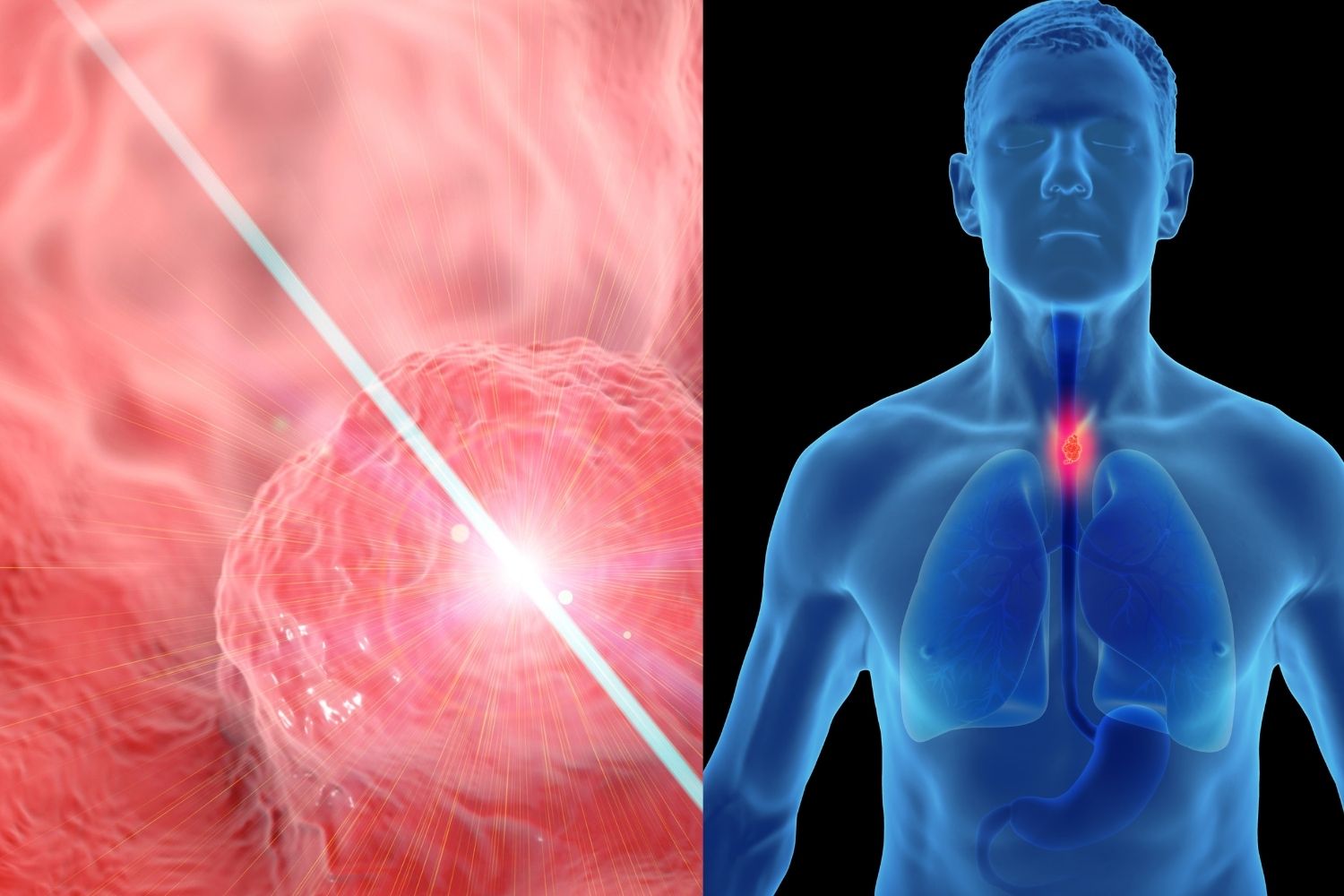Esophageal cancer is a cancer that forms in the esophagus, a muscular tube in the chest that is part of the digestive tract. This tube plays an important role in the digestive system by moving food from the mouth to the stomach.
Because there are two kinds of cells that line the esophagus, there are two main types of esophageal cancer:
- Adenocarcinoma (affect the distal eosophagus)
- squamous cell carcinoma ( affect the middle eosophagus)
In Africa, squamous cell carcinoma is predominant, while adenocarcinoma is more common in the United States. Esophageal cancer is the eighth most common cancer in the world and the sixth leading cause of death from cancer in the world. It is more common in men than in women due to their higher prevalence of tobacco and alcohol consumption.
Risk Factors
Tobacco
Smokers are five times more likely to develop esophageal cancer than non-smokers. The use of tobacco product including cigarettes, cigars, pipes, and chewing tobacco, is a major risk factor for esophageal cancer. This risk does go down for people who quit tobacco.
Alcohol Consumption
The more alcohol someone consumes, the higher their chance of getting esophageal cancer. Alcohol increases the risk of the squamous cell type more than the risk of adenocarcinoma
Age
The risk for developing esophageal cancer increases with age and is very low among children and young adults. Less than 15% of cases are in people younger than age 55. Mostly common > 50 years of age.
Plummer-Vinson syndrome
Rare autoimmune disease in the upper part of the esophagus, characterized with anemia (low red blood cell counts) due to low iron levels, tongue inflammation (glossitis), brittle fingernails, and sometimes a large thyroid gland or spleen. About 1 in 10 people with this syndrome eventually develop squamous cell cancer of theesophagus
Gastroeosophageal reflux disease (GERD)
The stomach normally makes strong acid and enzymes to help digest food. In some people, acid can escape from the stomach up into the lower part of the esophagus. The medical term for this is gastroesophageal reflux disease (GERD). In many people, reflux causes symptoms such as heartburn or pain that seem to come from the middle of the chest. People with GERD have a higher risk of getting adenocarcinoma of the esophagus.
Barrett’s esophagus
If reflux of stomach acid into the lower esophagus goes on for a long time, it can damage the inner lining of the esophagus. This causes the squamous cells that normally line the esophagus to be replaced with gland cells. These gland cells usually look like the cells that line the stomach and the small intestine, and are more resistant to stomach acid. This condition is known as Barrett esophagus. people with Barrett’s esophagus are at a much higher risk than people without this condition to develop adenocarcinoma of the esophagus.
Symptoms of esophageal cancer
Patients often complain of difficulty swallowing solids that progresses to difficulty swallowing liquids.
- progressive dysphagia (swallowing
- difficulties)
- unintentional weight loss
- bleeding
- hoarseness (abnormal voice changes)
- persistent cough
Can Esophageal Cancer Be Prevented?
Watching your diet and body weight
A diet rich in fruits and vegetables can help protect against esophageal cancer. Obesity has been linked with esophageal cancer, particularly the adenocarcinoma type, so staying at a healthy weight may also help limit the risk of this disease.
Avoiding tobacco and alcohol
Avoiding tobacco and alcohol is one of the best ways of limiting your risk of esophageal cancer.
Getting treated for Gastroesophageal reflux disease (GERD) or Barrett’s esophagus
Imaging tests to look for cancer of the esophagus
Endoscopy
An endoscope is a flexible, narrow tube with a tiny video camera and light on the end that is used to look inside the body. Tests that use endoscopes can help diagnose esophageal cancer or determine the extent of its spread.
Bronchoscopy
This exam may be done for cancer in the upper part of the esophagus to see if it has spread to the windpipe (trachea) or the tubes leading from the windpipe into the lungs (bronchi).
Barium swallow
A barium swallow test can show any abnormal areas in the normally smooth surface of the inner lining of the esophagus.This is sometimes the first test done to see what is causing a problem with swallowing. Even small, early cancers can often be seen using this test

